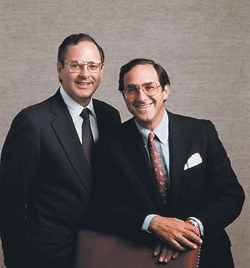 Today, Toll Brothers, the nation's leading builder of luxury homes, announced it’s preliminary 3rd quarter results. The outcome, not surprisingly, are pretty ugly.
Today, Toll Brothers, the nation's leading builder of luxury homes, announced it’s preliminary 3rd quarter results. The outcome, not surprisingly, are pretty ugly.Showing a pronounced downward trend, revenue for the quarter was down only 0.5% to $1.53 billion versus $1.54 billion in 2005 while the “quarter end backlog” was down 13% and “signed contracts” were down 45%.
This quarter’s results are now very clearly showing a peak in revenues with distinct and severe drop-off in demand.
Additionally, the company has reduced its guidance, indicating that it will likely build 15% fewer homes in the 4th quarter than it had originally anticipated.
Furthermore, with the release of it’s final Q3 earnings report on August 22, the company will announce a number of land “write-downs”, whereby the they will reduce the “book value” of certain land assets, thus acknowledging that land they have purchased is now not worth what they paid.
Included with today’s report, CEO Robert Toll provides the following analysis:
"It appears that the current housing slowdown, which we first saw in September 2005, is somewhat unique: It is the first downturn in the forty years since we entered the business that was not precipitated by high interest rates, a weak economy, job losses or other macroeconomic factors. Instead, it seems to be the result of an oversupply of inventory and a decline in confidence: Speculative buyers who spurred demand in 2004 and 2005 are now sellers; builders that built speculative homes must now move their specs; and nervous buyers are canceling contracts for homes already under construction. The resulting excess supply has exacerbated the drop in consumer confidence, which first appeared last September, that was already a drag on new home sales."
"Because much of the overhang of finished and near-finished product is being marketed using advertised price reductions and increased sales incentives, many anxious consumers are delaying their purchase decisions as they wonder about the direction of home prices. With interest rates still relatively low, the economy basically healthy and household formations still increasing, we believe that once the current oversupply of homes is absorbed and buyers become confident that home prices have stabilized, the market will return to firm footing."